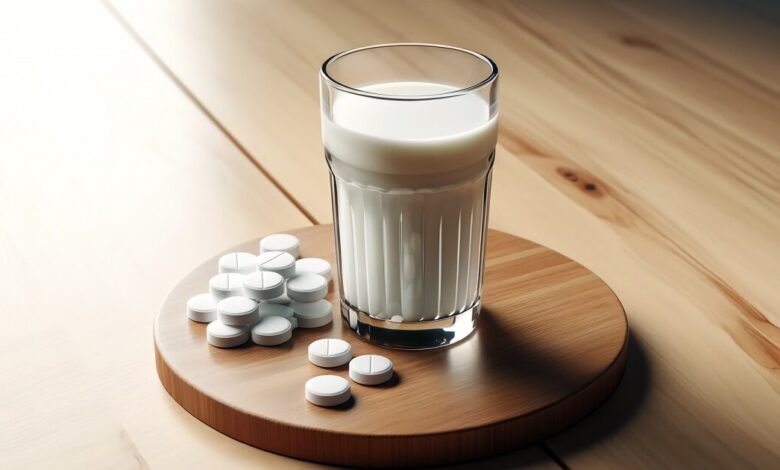Cow’s milk particles unlock one of medicine’s most challenging puzzles

One of the biggest challenges researchers face is making injectable medicines into versions that can be taken orally. Oral medications usually fail because they can’t withstand the harsh environment of the gut, which leads to poor bioavailability – a drug’s ability to be absorbed and exert a therapeutic effect on the body.
A class of drugs that can only be delivered by injection is RNA therapeutics. Using RNA-based molecules, these drugs manipulate the expression and activity of target molecules, modulating biological pathways to cure or treat a specific condition. RNA therapy allows for the treatment of diseases for which conventional drugs aren’t effective.
New research by King’s College London has found that biological nanoparticles in cow’s milk called extracellular vesicles (EV) may be a way of administering important RNA therapies orally.
“Oral administration of drugs is the most acceptable, convenient, and usually the cheapest way to take medicines as it doesn’t rely on healthcare professionals,” said Driton Vllasaliu, corresponding author of the study and senior lecturer in pharmaceutics at King’s College London’s School of Cancer and Pharmaceutical Sciences. “The ability to deliver ‘biological’ drugs, such as RNA therapies, is often regarded as the ‘holy grail’ of drug delivery but has remained a stubborn challenge. This study is significant as it suggests oral delivery of RNA drugs using technology based on milk EVs may be possible.”
We’ve got EVs; they play a crucial role in cell-cell communication. Most of our cells use EVs – think of them like cellular envelopes – to transport cargo such as proteins, lipids, and nucleic acids, including RNA, across long distances to target cells. They’re surrounded by a protective lipid layer and, importantly, can cross biological barriers.
So, the researchers examined whether EVs extracted from cow’s milk could be used as a means of delivering drugs to the problematic gastrointestinal tract. Milk EVs (mEVs) have previously been investigated for their therapeutic potential in irritable bowel disease (IBD) in mouse models.
After they’d confirmed that the mEVs crossed the intestinal wall using realistic organoid models of human intestines, the researchers loaded the mEVs with anti-tumor necrosis factor alpha (anti-TNF-a) RNA and administered a single dose to a rat model of inflammatory bowel disease (IBD). TNF-a mediates the intestinal inflammatory process and is one of the main factors implicated in the development of IBD. The treatment reduced the length of a major site of colon inflammation in the rats compared to controls.
The significant improvement in the appearance of the colon in the treated group suggested that mEVs successfully delivered functional anti-TNF-a RNA cargo, thereby reducing inflammation and promoting repair of the colon wall. Although the study only considered the effect of RNA-loaded mEVs on IBD, the researchers say the mEVs could be used to treat a broad range of diseases, including heart diseases and diabetes, using orally administered therapeutics.
“This could lead to the disruptive and sustainable manufacturing of affordable and accessible oral nucleic acid therapies for a plethora of diseases, leading to great societal impacts,” Vllasaliu said.
Moreover, as many people have already been regularly exposed to cow milk EVs, it’s unlikely to trigger an adverse immune response, unlike the synthetic nanoparticles currently used to deliver RNA therapy by injection.
The study was published in the Journal of Nanobiotechnology.
Source: King’s College London



